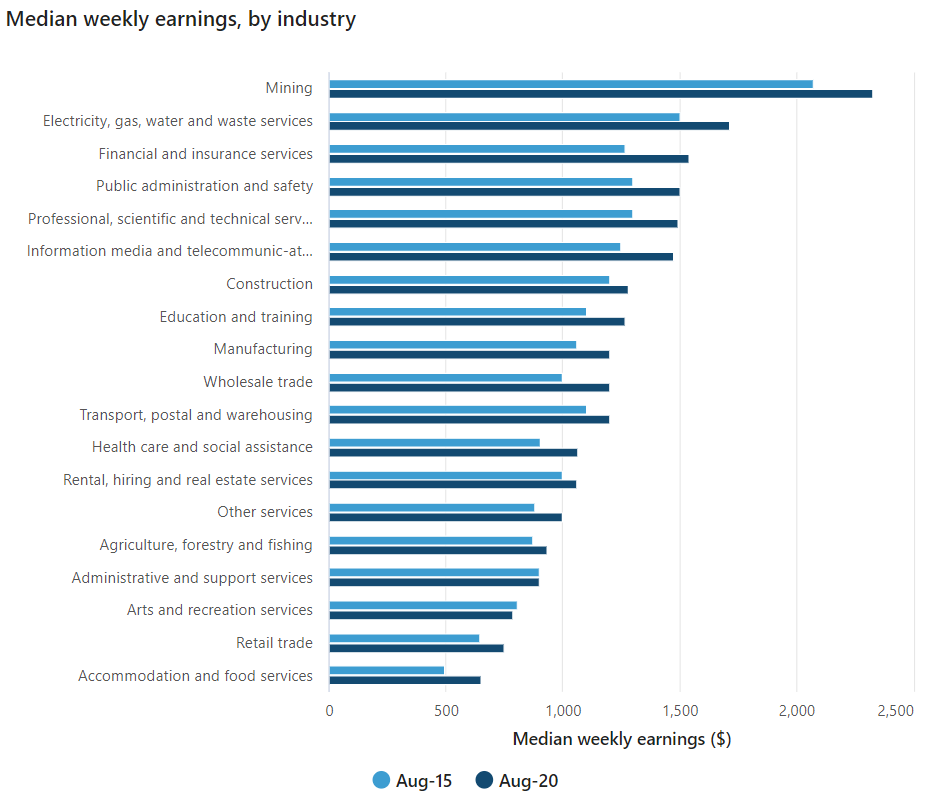The hospitality industry yesterday launched a fresh migrant slave drive:
Restaurant and Catering, the peak hospitality association, is urging the federal government to allow temporary visa holders to enter the country more easily in response to a nation-wide worker shortage in the industry.
Wes Lambert, chief executive of Restaurant and Catering, tells SmartCompany he wants to see the government add more job types to the priority skilled occupation list and allow international students to work uncapped hours in tourism and hospitality businesses.
“We must get fully vaccinated working holiday makers, international students and skilled migrants back in the country specifically for tourism and hospitality,” Lambert says.
According to SEEK data, the number of job ads in the hospitality industry increased from 84,378 on October 22 to 90,231 on November 2. There are currently 20,168 ads live for baristas alone.
Only in the world of Wes Lambert are baristas and cooks considered “skilled” workers worthy of being added to the priority skilled occupation list.
The fact remains that the hospitality industry is renowned for migrant wage theft and has the lowest pay rates in the nation by a wide margin, according to the ABS:
Giving the industry easier access to foreign workers will only worsen the systemic exploitation already prevalent across hospitality, keeping wages low and denying local workers employment opportunities and a living wage.
The Council of Small Business Australia (COBA), made up of more than 20 industry associations, has also joined to scab grab for cheap migrant workers:
“Across the board, all of our members are experiencing issues with workers because we haven’t got that influx of international students and skilled and unskilled workers”, [Alexi Boyd, chief executive of COSBOA said]…
She is calling on the government to engage with industry groups to discuss the skilled migration list to ensure it’s relevant for businesses at this stage of the COVID-19 crisis.
“We’re calling on the government to have a worthwhile discussion with industry groups. The lists that were in place two years ago are not really relevant for what small business needs right now,” she says.
The long-term solution to “labour shortages” is to offer decent wages and conditions. That’s how the labour “market” is supposed to work. Paying higher wages is also good for productivity.
Without easy access to low-paid migrants, firms would be forced to lift wages to attract local workers. In turn, these higher wages would encourage firms to seek out labour-saving technologies and automation in a bid to lower their labour costs, which would ultimately lift the economy’s productivity.
Higher wages further improves productivity by encouraging the least productive businesses to lose people, shrink and go bust, transferring workers, land and capital to more productive businesses.
By contrast, if Australian firms are given easy access to cheap, exploitable migrants, then wages will remain low, there will be little incentive for firms to automate, the capital base will shallow, and ultimately the nation’s productivity will stagnate.
This is basically the predicament Australia found itself in over that past decade, simultaneously suffering from both low wage growth and low productivity growth as immigration boomed. It is a recipe only for living standards to stride endlessly backwards.
Any industry that relies on cheap exploitable migrant labour to thrive is not a sustainable industry. It needs fundamental structural reform.
Politicians must stop pandering to vested interests like RCA and COBA. Otherwise Australian wage growth will never recover.


